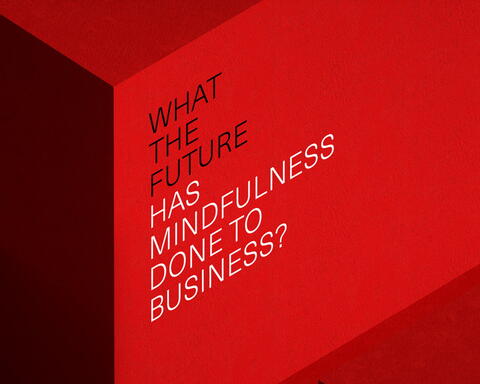Written by
Published
Category
Innovation is key for large corporations that want to survive in today's volatile business environment. But what essential qualities do companies need to evolve?
While much has been written and researched about the role of experimentation in helping startups to rapidly iterate their business model and products – led by lean startup thinking – comparatively little attention has been paid to how large corporations use experimentation in their innovation efforts – both as a tool for strategic decision-making and for increasing the efficiency and success rate of their innovation efforts.
Innovation as a discipline within large corporations has never been more important to the survival and success of the firm, particularly since the outbreak of coronavirus. The operating and business environments are more volatile than ever. The emergence of new technologies, coupled with rapidly evolving customer behaviours have driven an increased rate of change and diversity in the competitor landscape, as well as in the products, services and business models that are possible.
As in any market, this volatility brings with it the opportunity for both spectacular gains and catastrophic losses – think of it as Schumpeter’s creative destruction made real: “the stick of destitution and the carrot of spectacular reward”.
For businesses, this creates a dilemma: on one hand the possibilities can be abundant, especially when as a scaled business you have access to capital, assets, existing customer bases, supply chains and value chains that can be leveraged or reconfigured. On the other, this plethora of potential opportunities increases the risk of pursuing the wrong one.
A key strength of the experimentation method is that it is designed to progressively increase confidence in a set of assumptions about the future
Amazon is a business that has become extremely good at recognising the potential opportunities of new technologies and unlocking that value, and yet even they have made bad bets in the past, vividly illustrating both the downside and upside of the volatility of innovation strategy.
For example, the Amazon Fire Phone was discontinued after one year, with a $170 million write down. The phone made perfect sense from the point of view of the business but failed in the value proposition to customers. As Wired journalist Marcus Wohlson put it: "the only one who really needs an Amazon phone is Amazon."
And again, in 2003 the Amazon leadership recognised the set of internal services they had built to help them develop software could become "an operating system of sorts for the internet", prompting an internal project that used its emerging capability in software development environments to launch Amazon Web Services.
In this context, we see the rise of experimentation within corporate futures and innovation teams as a phenomenon that can help to navigate the volatility, the tensions of action versus inaction, of balancing upside and downside risk, at a pace that matches or tracks the pace of change in the market.
We believe that confidence is driven by an experimental mindset: speed, simplicity, flexibility
Together with Fahrenheit 212, a strategy, innovation and design consultancy which helps businesses to navigate this challenge, we are currently conducting a study into the practice, applicability and efficacy of experimentation as an approach to tackle this dilemma.
Our initial research, focusing on innovation projects within global brands and FTSE 100 businesses has revealed benefits to using this approach. They include:
- Clearer strategic rationale
- Increased speed of iteration
- Increased speed of decision making
- Greater belief and buy-in from the core business
Taken together, we believe these lead to a higher level of confidence within the business, both in the strategic direction of the innovation efforts and in the behaviour of the people tasked with navigating these volatile times.
We have found that a key strength of the experimentation method is that it is designed to progressively increase confidence in a set of assumptions about the future. And this increased confidence can be correlated with lower risk and is a key driver of strategic decision making.
Our preliminary research suggests that, in this new paradigm for businesses, confidence represents a key competitive advantage – with the view that confident businesses are able to better identify the right opportunities to target, are able to increase the speed of decision making and thus increase their speed of response to market changes, at a lower cost.
We believe that confidence is driven by an experimental mindset - speed, simplicity, flexibility:
- Speed – Successful experimentation hinges on speed of learning. Moving rapidly from blank page to a strategy in which you have confidence to proceed means developing, testing and iterating multiple hypotheses, the faster a team can cycle through these tests, the faster they will get to the level of confidence required to unlock investment.
- Simplicity – as corollary of speed, experiments should be as simple as possible to deliver the required learning. Teams with too much time and resources may over-engineer an experiment, ultimately slowing down their progress. Time spent building a complex experiment is time lost to learning, pivoting and progressing.
- Flexibility – In the heat of ideation it can be easy for teams to become attached to specific strategies and use experiments to validate ideas, rather than to test hypotheses. Instead, teams must open to the possibility of having hypotheses disproven and abandoning favoured ideas. The fact that a hypothesis is found to be invalid is a vital piece of data that contributes to building confidence. This flexibility ensures that the team can quickly pivot on that learning, ultimately developing a strategy will command more confidence.
The goal of experimentation is not to be right, but to learn and iterate to the point where the team and stakeholders are confident enough in the strategy and early solution to unlock the investment and resources required to progress.
As we continue with the research, we will be probing further into the methodology of experimentation to identify the key facets that can increase confidence and develop recommendations for increasing the rate of success from experimentation within large businesses.
This article was amended on 7 April 2020 to reflect the coronavirus pandemic. The accompanying video was recorded before the UK Government-initiated lockdown.





